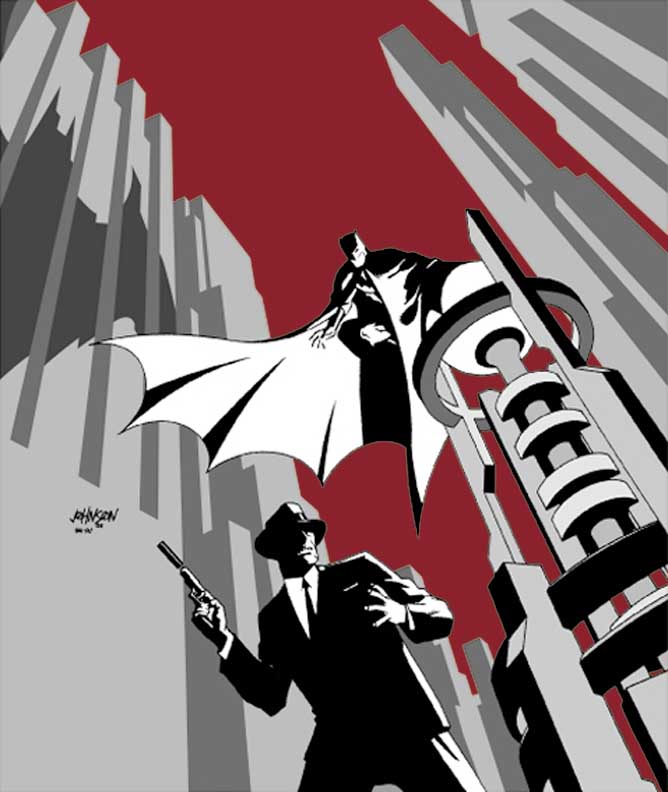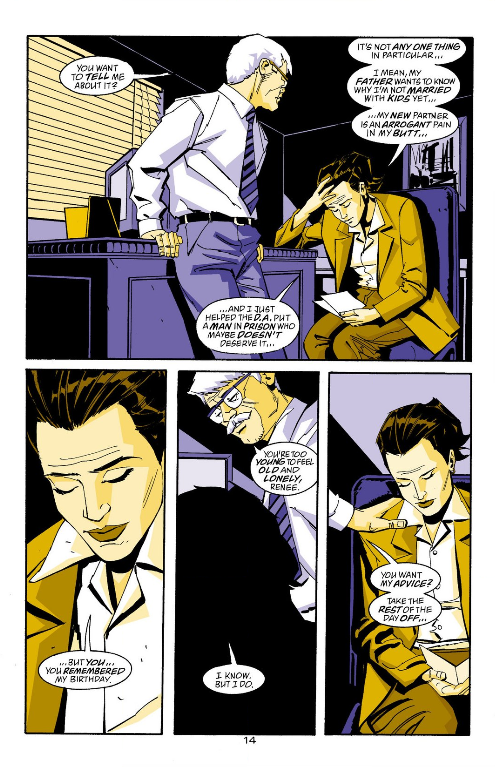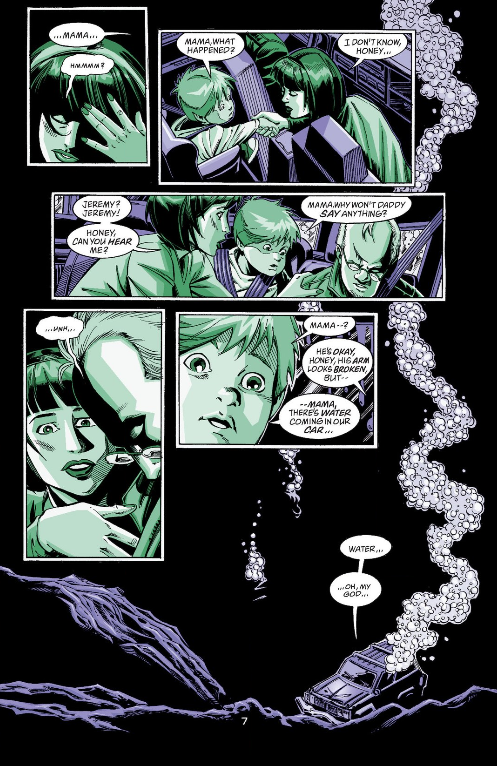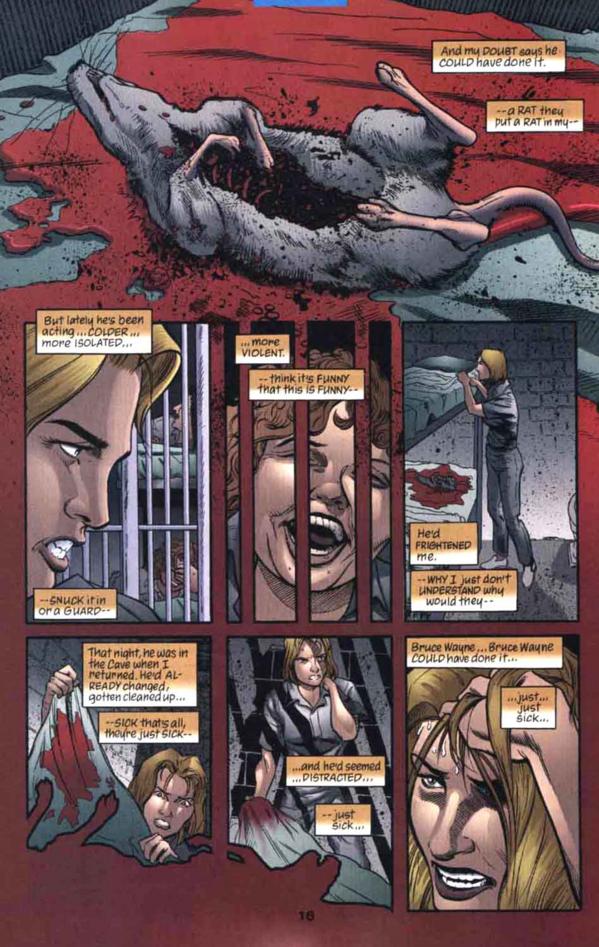In The Rundown, Deadshirt dives into our cardboard long boxes to shine a light on important, unusual or otherwise remarkable comic runs (mainstream or otherwise) from a specific creative team.
The Series
Detective Comics (vol. 1) #742-753, 755-775
Art by Shawn Martinbrough, Phil Hester, Rich Burchett, Steve Leiber, and more
DC Comics
At a Glance
Writer Greg Rucka came into the Batman universe during No Man’s Land, a yearlong storyline that ran throughout 1999 during which the four core Batman titles (then Batman, Batman: Shadow of the Bat, Detective Comics, and Legends of the Dark Knight) essentially became one weekly book. Rucka wrote or co-wrote over twenty issues of the No Man’s Land storyline across the core titles and more (as well as the excellent prose novel adaptation), establishing himself as the Batman story team’s most valuable player. When the Batman titles returned to the standard monthly format, Rucka took over writing Detective Comics, crafting a new status quo for the city of Gotham and introducing new characters and concepts that would carry over into his work on Gotham Central, 52, and Checkmate.
Rucka, along with Shawn Martinbrough, Rich Burchett, Steve Leiber, and a scattering of excellent fill-in artists, delivered a Detective Comics run that built on what had made No Man’s Land so excellent, with a large, textured ensemble cast, complex plots, and an emphasis on character storytelling over big action beats. Rucka and co. truly earned the title Detective Comics, featuring not just Batman but the entire Gotham City Police Department, introducing many of the characters who would make up the cast of Gotham Central, the comics police drama that he would later create with writer Ed Brubaker and artist Michael Lark. The later half of the run would also see Batman embroiled in the world of international espionage (another of Rucka’s favorite subjects), a fit so natural that it’s a wonder Batman doesn’t get involved in superspy action more often.
Standout Issues
Detective Comics #747
Renee Montoya takes center stage in this relatively Batman-less issue of Detective Comics. Renee has long been one of Greg Rucka’s favorite characters, being the focus of much of his No Man’s Land work and one of the leads in both Gotham Central and 52. It’s a day-in-the-life story set on Montoya’s twenty-ninth birthday, giving us a peek at her relationships with her family and her co-workers at the GCPD. Renee is starting to get some pressure from her parents to find a man and settle down (Renee wouldn’t be outed as a lesbian until years later) and is clashing with her new partner, Crispus Allen (who would also figure heavily into future Rucka-penned titles). Her workday also includes testifying at a controversial murder trial.
No Man’s Land has a kind of insane premise, with the entire city of Gotham being abandoned by the US government, leaving those too stubborn, poor, or crazy to leave struggling in a lawless earthquake-wrecked urban nightmare for a year. When the story ended, Gotham seemed to return to normal, its infrastructure rebuilt by the efforts of Wayne Enterprises and LexCorp, but Rucka’s Detective highlighted the social damage caused by the upheaval that would take much longer to repair. Gotham’s population was deeply divided into two groups: OG’s (“Original Gothamites” who stuck around during NML even though it usually meant losing everything) and DeeZees (short for “deserters” who left town and then returned after NML, their assets intact but credibility as Gothamites wrecked). The running subplot about the tension between these two groups makes the aftermath of NML feel more real, and also opens the door to some commentary on economic equality and bias in the judicial system.
It’s also an opportunity to showcase Renee as a complex character in an impossible situation. She’s a cop, and she believes in the rule of law. But she’s spent the last year in a lawless hellscape, where she and her fellow officers literally became a street gang in order to protect the people who remained in the city. But now the law has returned, and Renee must testify at the trial of an OG who killed to defend the home where he’d been living, a home that legally still belonged to his victim, its returning DeeZee owner. Renee tries to put the crime in context, but the DA (who like most authority figures, is a DeeZee herself) won’t hear her. This is a solid character piece that demonstrates why Renee Montoya remained such a fixture of Rucka’s DC work the next decade.
Detective Comics #757
Detective Comics #757 turns up on a lot of critics’ lists of the greatest single-issue Batman stories, and was recently included in DC’s Batman: A Celebration of 75 Years hardcover collection. In “Air Time,” Batman is chasing a carload of Lucky Hand gangsters down a winding mountain pass. Batman’s internal monologue laments the lives these crooks have already taken and his own inability to stop them in time. If this was the first Batman story you ever read, you would understand within the first three pages who Batman is and what drives him.
On the fourth page, a car carrying a family of three, including a small child, is run off the road by the escaping criminals and into the Gotham River below. Batman turns the corner moments later–he doesn’t see the family sedan. They sink to the bottom, slowly running out of air, and no one is looking for them. The story cuts back and forth between Batman chasing down the Lucky Hand and the family’s struggle to stay alive in the car. The suspense is held as long as possible as to whether or not Batman will reach them in time, and the payoff is all the more rewarding.
“Air Time” feels like a really excellent episode of Batman: The Animated Series, not only because it’s penciled by the expressive Rick Burchett, himself a veteran of its spin-off comics like The Batman Adventures, but because it’s a simple, self-contained story of Batman doing what he does best: saving lives. It’s also an excellent look into Batman’s psychology. Batman is his own harshest critic; he’s so focused on his failures that he can’t acknowledge when he succeeds. Not only does this play well as a standalone character study, but it also speaks to Batman’s struggle throughout the course of the run.
Detective Comics #767
Much of Rucka’s Detective run takes the reader out of Batman’s head and puts other characters in the driver’s seat. Chief among these co-lead characters is Sasha Bordeaux, a former Secret Service agent who’s hired by Wayne Enterprises’ CEO Lucius Fox to serve as Bruce Wayne’s bodyguard. Once Sasha enters the book, most stories are told at least in part from her perspective, as she tries to figure out where her principal keeps disappearing to at night. When she does learn of his double-life as Batman, she remains committed to doing her job, watching the currently sidekick-less Batman’s back while he fights crime. So when Bruce Wayne is framed for the murder of his ex-girlfriend Vesper Fairchild, Sasha is arrested (and later, convicted) as his accomplice. She keeps Bruce’s secret, at great personal sacrifice.
The brilliance of Sasha’s inclusion in Detective Comics is that by making her the lead of the book in place of Batman, we not only get introduced to an interesting new character to explore, but we also put distance between the reader and the Dark Knight during the build-up to a large mystery crossover, Bruce Wayne: Murderer? For the months leading up to the event, we as the reader don’t always know what he’s up to, or how he’s feeling; we can only observe from the perspective of this relative newcomer who doesn’t know him very well. His behavior feels strange and erratic, like he might be headed for a mental breakdown, so that when we (and Sasha) find him holding Vesper’s dead body in Wayne Manor, we have some real questions. It’s not that anyone reading really thinks Batman murdered someone, but the slow buildup and the separation create enough tension that the mystery stays compelling for months.
Sasha continues to connect with the audience during this gripping single-issue story that chronicles her time pretrial confinement in Blackgate Penitentiary. She’s a tough woman, but the physical and psychological trials of prison are taking their toll and she’s starting to lose it a little. The evidence is stacked against her and Wayne, and the only chance she has at getting out is to pin the crime on her principal. The thing is, she’s can’t be 100% sure he didn’t do it–the crime occurred while they were out on masked patrol, but Batman went off on his own twice during the night–but she believes in him, as the reader does, enough to spend the rest of her life in prison for him. Powerful stuff.
The Bottom Line
This run on Detective Comics is a must read for fans of more contemplative, down-to-earth Batman stories. It’s light on traditional superhero-type action, but has all of the mystery and intrigue you’d expect from a book with the word “Detective” on the cover. Greg Rucka’s mystery writing is so deft that he actually manages to sell a story in which Batman himself is the prime suspect. The reader is encouraged to sympathize with Gotham’s secondary characters more than with the traditional lead, following the GCPD almost as attentively as the Dark Knight himself, which helps to maintain Batman as a larger-than-life force of nature, but Rucka’s Batman is also deeply flawed and vulnerable, which makes his perseverance as a crimefighter that much more compelling.
This is also an essential run for any fan of Greg Rucka work in particular, because it features all of the qualities that have made him such a standout in the comics and literary worlds. It’s got a depth of character and a moral ambiguity that forces the reader to sympathize with practically every character. It balances a real-world feel without becoming a “dark and gritty” apology for the superhero genre. It also features a diverse cast; Rucka introduces a ton of characters and only a handful of them are straight white men, which is something that didn’t seem like a big deal in 2000 but is something notable in today’s intensely hostile and divided comic book industry. Most of all, it focuses a great deal of attention on complex female characters, which may be what Rucka is best known for.
Additional reading:
- The immediate successor to this run on Detective Comics is Greg Rucka, Ed Brubaker, and Michael Lark’s Eisner-winning Gotham Central series, which focuses on the GCPD (including Montoya, Crispus Allen, and a number of characters introduced in Detective) trying to keep the city together during the Batman-less daylight hours.
- Sasha Bordeaux’s story continues in The OMAC Project by Greg Rucka and artist Jesus Saiz, which was one of the four miniseries that led up to Infinite Crisis. Now an agent of the rogue spy organization Checkmate, Sasha and Batman team up once again to keep the world from being conquered by superpowered cyborgs. After Infinite Crisis, Rucka and Saiz pick up her story in their relaunched Checkmate ongoing series.
- After Montoya’s life takes an unexpected turn at the end of Gotham Central, she goes on a globe-trotting journey of self-discovery with The Question in the year-long weekly epic 52, co-written by Rucka with fellow DC Universe architects Geoff Johns, Grant Morrison, and Mark Waid and an army of talented artists. Her journey continues further in the five-part miniseries Crime Bible: The Five Lessons of Blood.
- Finally, there’s Greg Rucka’s critically-acclaimed second run on Detective Comics (#854-863), with art by J.H. Williams III and Jock, which starred not Batman but the reimagined Batwoman, Kate Kane. This military sci-fi interpretation of the superhero genre is visually gorgeous and structurally innovative, and not only because it’s the most high-profile title to feature a lesbian lead character. Renee Montoya also appears in flashbacks, and in her own backup feature with art by Cully Hamner.
Check out other installments of The Rundown!





